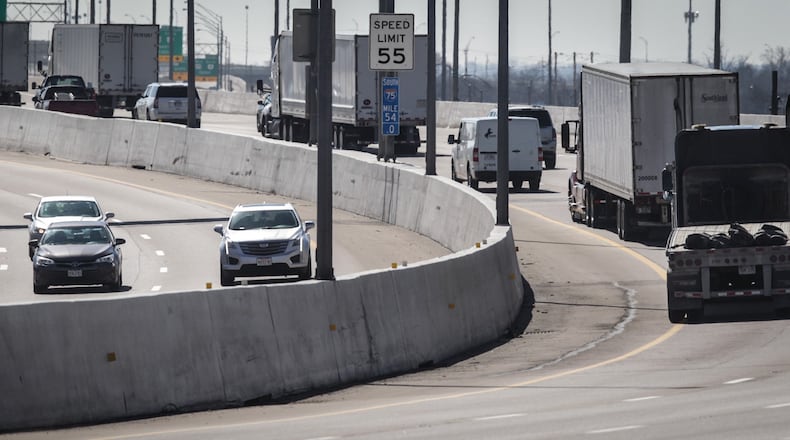OSHP Sgt. Nathan Dennis told this news outlet there’s also been an increase in speeding citations. That includes speeds of 20 miles per hour or more over the posted speed and a large increase in the amount of violations for motorists exceeding 100 mph.
“When you start taking a look at how many citations we issued in regards to speed, then we start seeing a relationship forming there of an increase in crashes,” Dennis said. “I’m not saying that all the OVI crashes are speed-related, obviously, but I think people unfortunately took advantage of nobody being on the roadways as an opportunity to increase their speed because they didn’t have the normal slowdowns.
“Speed obviously kills. The more you increase that speed, you also increase the chance of a crash resulting in a fatality.”
Montgomery County saw 609 OVI-related highway crashes in 2020, resulting in 41 deaths compared to 601 OVI-related crashes in 2019, resulting in 30 people being killed, according to OSHP data. Meanwhile, Clark County saw OVI-related highway crashes increase from 206 in 2019 to 266 in 2020, and the amount of OVI-related deaths more than quadruple from 4 to 18.
Butler County saw highway crashes decrease from 413 in 2019 to 348 in 2020, but had the amount of fatalities double from 7 to 14. Miami County saw negligible change in either area between the two year.
Greene and Warren County saw both a drop in OVI-related highway crashes and OVI-related fatalities between 2019 and 2020.
OSHP’s OVI data site reveals that, between Jan. 1, 2016 and the most recent update this week, there have been 71,467 crashes in Ohio attributed to impaired driving, 2,349 of which were fatal.
People are driving impaired also have a tendency to forget their safety belts more often, and roughly half of impaired drivers are not buckled at the time of a crash, Dennis said.
OSHP works to educate the public about the danger of drinking alcohol and driving or using illegal drugs and driving as a deterrent from having to stop them on the side of the road in an enforcement setting or, even worse, in a crash setting, he said.
One way for area residents to help OSHP reduce the number of OVI crashes and fatalities is dialing #677 after spotting a vehicle that may be operated by someone who is driving impaired, Dennis said, adding that motorists should wait to call until they can do so safely.
OSHP’s efforts to educate the public seem to be paying off this year when it come to the overall amount of OVI-related crashes, he said. As of April 8, there have been 2,943 OVI-related crashes this year, 45 of which have been fatal crashes, Dennis said. That’s a decrease from that date in 2020, when there were 3,151 OVI-related crashes, and 124 fatalities.
“We’ve done some large social media pushes over the last few months that really push on impaired driving, distracted driving, things like that,” he said. “Hopefully, the message is getting out there and that’s a reflection of that. We’ll have to wait and see at the end of the year what that looks like.”
The number of all overall fatal crashes in Ohio, even those unrelated to OVI, increased from 234 as of this time in 2020 compared to 276 year-to-date, an 18 percent increase, according to OSHP data.
About the Author

